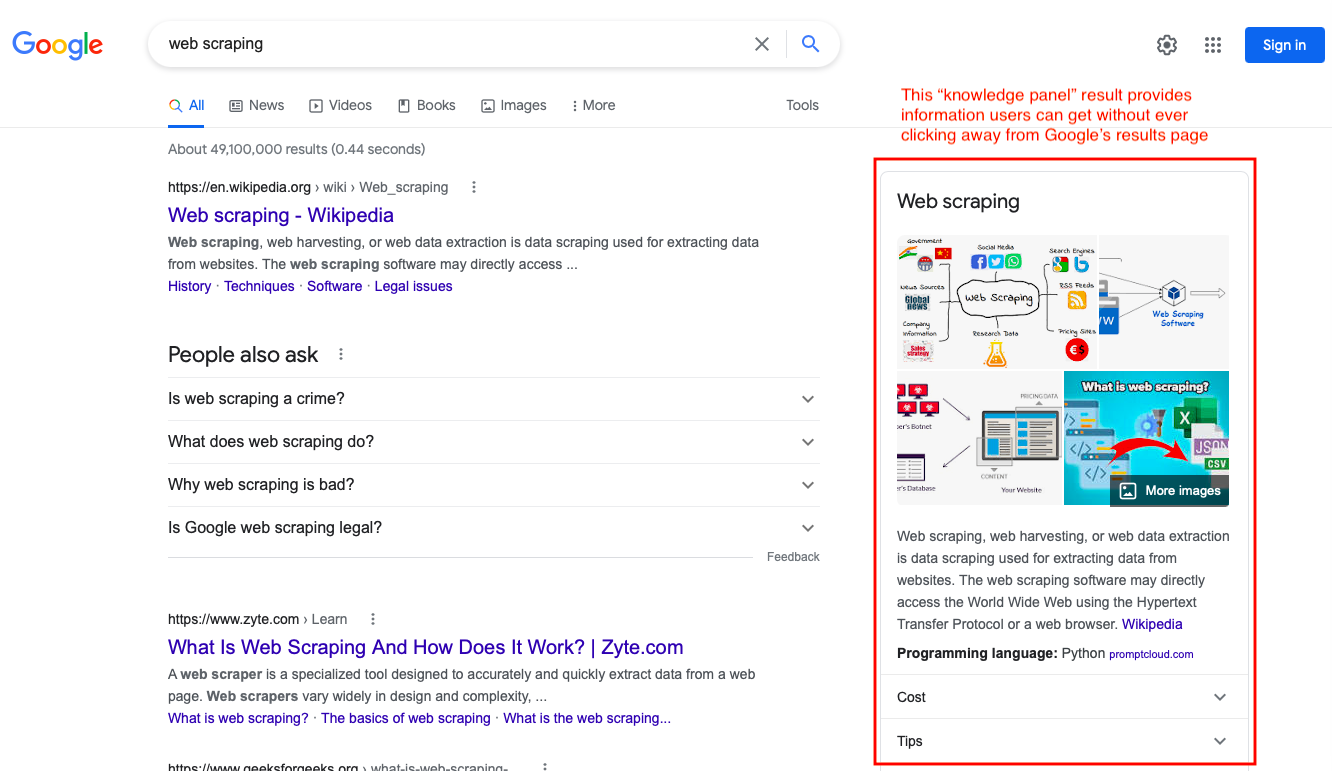
How (and Why) to Optimize Your Job Listings for Google for Jobs
In the last decade, Google has tried its hand at everything from selling insurance to social media to aggregating job posts. And while the first two largely failed, the last one is proving successful: Google for Jobs lets job seekers search for open positions via standard Google search.
The value for job seekers is that they can find open positions from multiple job boards and company sites via a single search. So what’s the value for job boards? More traffic that converts better.
Here’s a closer look at why job boards should optimize listings for Google for Jobs and how they can do that.
Background: What Is Google for Jobs?
First, it’s important to note that Google for Jobs is not a job board. It’s an “enhanced search tool,” kind of like the search engine’s image-only search or its featured snippets functionality (see Figure 1). This means that optimizing listings for Google for Jobs is not the same thing as making them available to competitors.
 Figure 1: Google for Jobs results on a standard SERP
Figure 1: Google for Jobs results on a standard SERP
That’s the technical truth. The other reality, of course, is that Google is a business and it has a long history of experimenting with new revenue models that may hurt other businesses that rely on it to drive traffic (as with Knowledge Panel (Figure 2) and other zero-click results that give people answers directly on search engine landing pages without requiring to click through to sites).

Figure 2: Google search results featuring a zero-click “Knowledge Panel”
Still, the benefits of optimizing for Google for Jobs outweigh the risks – at least for now. Let’s take a closer look at what those benefits are for job boards.
Why Optimize Job Listings for Google for Jobs?
Your goal is to drive as many qualified leads to your customers’ listings as possible. Google can help you do that. Because more people visit Google than any individual job board, making your listings highly visible – and attractive – through standard Google searches can help you drive traffic to your customers’ listings.
Take the case of ZipRecruiter, which has a case study published on the Google for Jobs site. After optimizing its listings for Google for Jobs, the job board saw…
- 35 percent more non-branded organic traffic.
- A 4.5x-higher conversion rate from Google traffic than prior to the optimization.
- A 3x-higher conversion rate from Google traffic than other engines’ traffic.
- 10 percent lower bounce rate for Google visitors to job pages.
Those results are difficult to argue with. Even if some people who find your job board via Google for Jobs end up applying directly on a company’s site, the ZipRecruiter results signal that the net gain is worth it. So how can your job board enjoy similar results?
How to Optimize Job Listings for Google for Jobs
Google for Jobs displays available listings based on structured data included in listings on a job board’s site. The JobPosting element has fields for the following:
- Job title
- Employer
- Employment type (contract, full time, part time, etc.)
- Location
- Salary
… and more (see sample code snippet for details).
 Figure 3: Sample code snippet for Google for Jobs’ structured data
Figure 3: Sample code snippet for Google for Jobs’ structured data
You don’t have to include information in every one of these fields, but Google for Jobs gives preference to job postings that contain certain elements. Among important fields right now: salary, employment type, employment location (including remote vs. onsite), and sign-on bonuses. Google also likes simple language that avoids jargon.
Note that these fields are not static: in classic Google fashion, the search giant occasionally adds new fields, updates others, and tweaks its algorithm to determine which ones get priority.
What does this mean for job boards?
If you’re not yet using structured data to code your job listings, now is a good time to start so you can drive more traffic that converts better.
If you are using structured data, the key to continued prominence in Google for Jobs results is to keep your listings updated to ensure they’re displaying accurate, up-to-date information (which, in most cases, means keeping your web scrapes updated).
Embrace Google for Jobs’ Expanded Reach and Visibility
Google wants users to come to Google for all of their searches, including jobs. Google for Jobs has improved the visitor search experience. While Google for Jobs doesn’t currently include a paid option, it might one day. Then again, simply keeping users around longer has benefits for the brand’s existing streams of ad revenue.
Our take? Even if paid options do become part of Google for Jobs, the search giant isn’t likely to launch its own job board – why would it when it can efficiently serve results from dozens of other boards?
For now, the benefits for job boards are clear: optimizing job listings for Google for Jobs can drive increased traffic and improve conversions. If your team isn’t familiar with how to add structured data to posts or doesn’t have the bandwidth to do it and keep posts updated, get in touch. We’d love to help you improve performance by optimizing your listings for Google for Jobs.